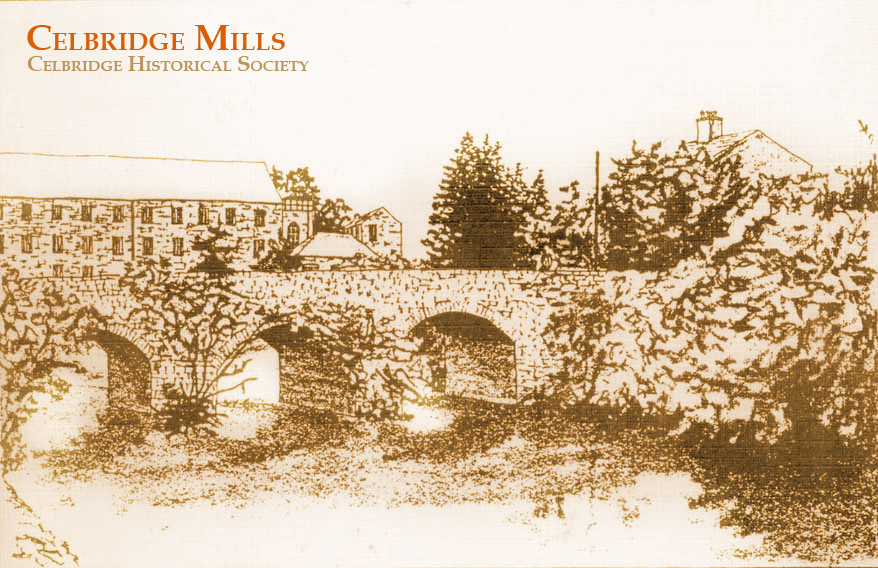The Mill

The oldest mill in the area is Temple Mills 2 km outside the town on the Ardclough Road (53°20′01″N 6°32′41″W). It was operated by the Tyrrell family for 300 years. In the 19th century it was operated by James Greenham and Joseph Shaw before closing in 1871. It was briefly revived by the McCracken family before closing eventually in 1895.
Manor Mills, later Celbridge Mill, has seen 30 changes of lease or owner in its documented history.
The oldest part of the surviving building was built by Louisa Conolly in 1785-8 incorporating parts of the old Celbridge Market House.
The mills were reopened and extended in 1805 by Laurence Atkinson and James Haughton from Yorkshire. Haughton’s enterprise had become the biggest woollen mill in the country by 1815. It employed 600 people before the ending of protective duties in 1825 caused immense damage to the woollen industry in Ireland.
Fraudulent activity by the owner Benjamin Marshall in 1831, a fire in 1832, and a series of lawsuits caused it to close before it was reopened in 1840-79 by Giles Shaw.
In 1922 some of the Mill buildings were briefly used by British forces and were extensively damaged during the War of Independence.
The Mill re-opened briefly in 1930 when the Leinster Hand Weaving Company acquired the premises for conversion to a weaving mill.
During the 1940s many girls from the local convent school were employed doing needlework in Celbridge Mill.
It was bought by Barney Reynolds in 1953 and was once again the most important industry in the region and employed 120 people, making ladies’ fashion. It was taken over by Navan Carpets in 1966, producing woollen yarn. Problems with the parent company meant the mill closed in May 1982 with the loss of 220 jobs.
In 1985 it was extensively restored as a community and business centre, with small industry units, meeting rooms and activity facilities which are still used by the community.
The buildings dominate the approaches to the town. On the adjoining street, (known as English Row since it was settled by tradesmen who came from Yorkshire in the 1805-21 period) there is a wall mount dating the Mill to 1785, and a stone commemorating the prehistoric site of St Mochua’s well.
